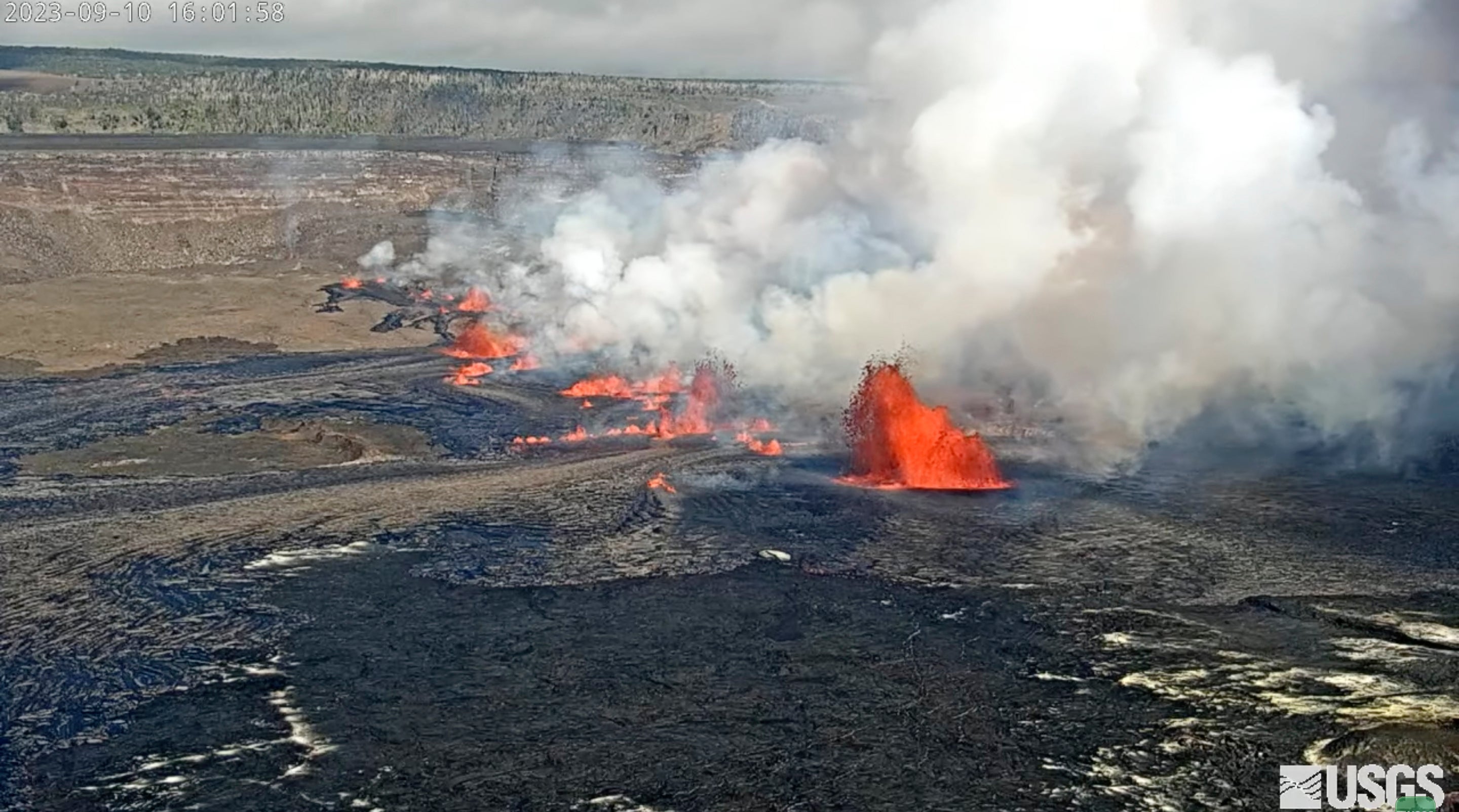Earthquakes raise alert for Hawaii's Kilauea volcano. But any eruption is unlikely to threaten homes
A surge of earthquakes at Kilauea’s summit is prompting scientists to raise the alert level for the Hawaiian volcano

Your support helps us to tell the story
From reproductive rights to climate change to Big Tech, The Independent is on the ground when the story is developing. Whether it's investigating the financials of Elon Musk's pro-Trump PAC or producing our latest documentary, 'The A Word', which shines a light on the American women fighting for reproductive rights, we know how important it is to parse out the facts from the messaging.
At such a critical moment in US history, we need reporters on the ground. Your donation allows us to keep sending journalists to speak to both sides of the story.
The Independent is trusted by Americans across the entire political spectrum. And unlike many other quality news outlets, we choose not to lock Americans out of our reporting and analysis with paywalls. We believe quality journalism should be available to everyone, paid for by those who can afford it.
Your support makes all the difference.A surge of earthquakes at Kilauea's summit prompted scientists to raise the alert level for the Hawaiian volcano on Wednesday. But any eruption is unlikely to threaten homes.
The Hawaiian Volcano Observatory said it detected 25 to 30 small earthquakes per hour since 3 a.m. at the southern part of the volcano's caldera. This spot is inside Hawaii Volcanoes National Park and far from homes.
Magnitudes ranged from less than 1 to 3.4. Several quakes were large enough to be felt by observatory staff in the field.
The observatory raised its alert level to “watch,” signifying that Kilauea was showing heightened or escalating unrest. This level indicates there is an increased chance the volcano will erupt, though it is unclear when.
Previously, the designator for Kilauea was “advisory,” meaning the volcano was showing signs of elevated unrest above a known background level.
Kilauea is one of the world's most active volcanoes. It last erupted in September, spewing lava inside the summit caldera for nearly a week. It also erupted in June.
In 2018, lava burst out of cracks on Kilauea's eastern flank in its lower East Rift Zone and destroyed more than 700 homes.
The observatory said there has been no unusual activity in the middle and lower sections of the East Rift Zone.
Kilauea's much larger neighbor, Mauna Loa, erupted in 2022 for the first time in four decades.